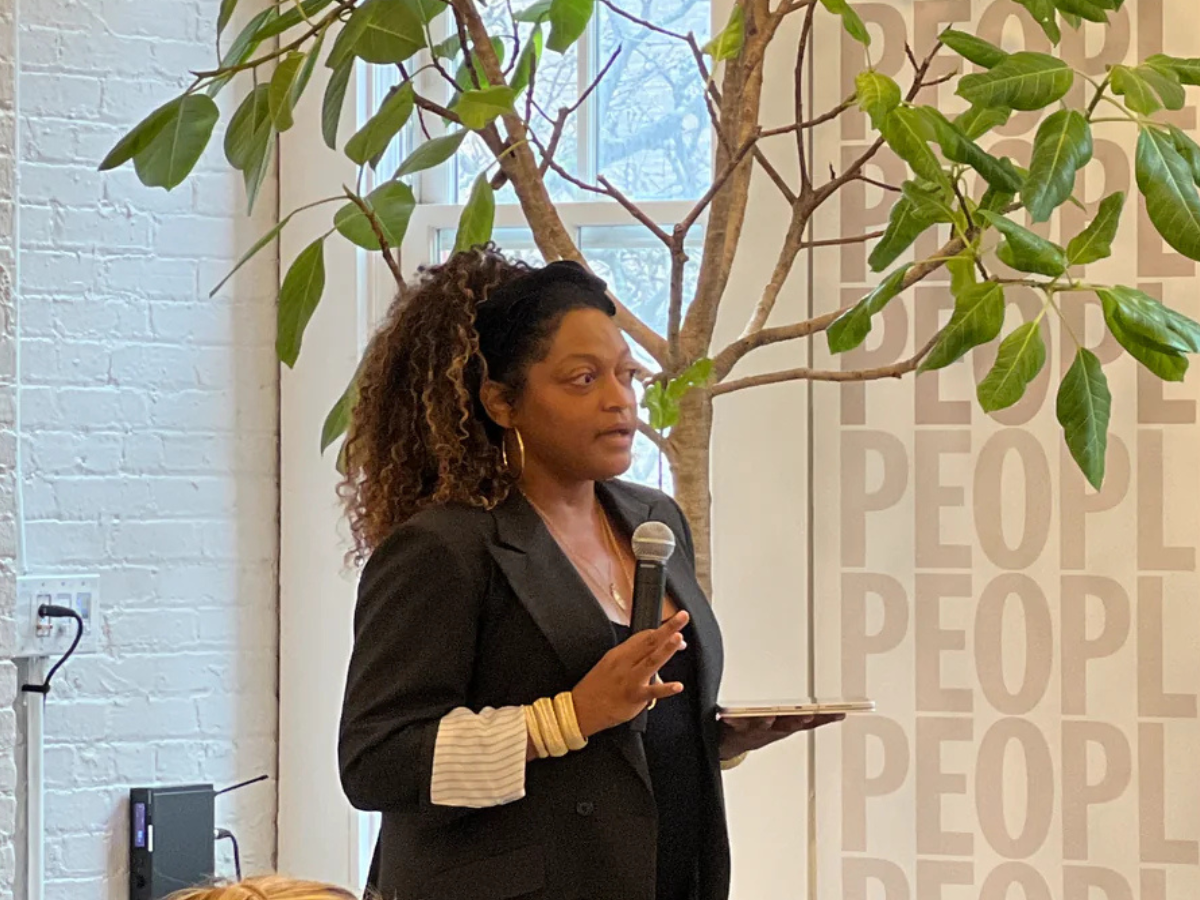Periods. I’ve been having one for 31 years. During those 31 years, I have used thousands of tampons and had countless situations where I bled over something I should not have. Be it bed sheets or bus seats; chances are if you talk to anyone female, she has at least one memorable period story that involves her having to tie a jacket/shirt/scarf/whatever around her waist whilst backing out of a room.
Meanwhile, here we are going around like “no big deal,” complaining about our periods while attempting to keep up our regular routines. We’ve been told that we can (and should!) do it all during our periods. Sports tampons, invisible pads, period panties…It makes me wonder what we really should be doing during our periods. I mean, it’s a pretty significant thing that’s happening; why the effort to make it seem like it’s not?
Any woman can tell you that it is a big deal. A huge one, in fact. Trust me when I say that if men had to bleed five days out of every month, there would be time off, private clubs designed for just that purpose, and insurance would cover the cost of tampons and Advil. So, how did we, as women, become disconnected from the sacredness of our cycles, and how can we change how we experience our periods?

The word menstruation is derived from Greek and Latin words meaning month and moon. Menstruation ties us to nature and gives us insight into our health and chakra systems. Early cultures respected and appreciated this time of the month and its connection to nature. They paid attention to the effect of the lunar and seasonal cycles on our emotions, energy levels, and psychological states and learned how to create balance in all three. There was a focus on self-care that empowered women of all ages to honor their bodies and make choices that put themselves first. It was a time of purification, rejuvenation, creativity, and rest. In some cultures, women were relieved of all duties and gathered together, elevating their collective energy, resting, and connecting to their divine feminine energy.
Prior to electricity, women ovulated according to their physiological and hormonal response to the amount of light in the night sky. Our biological blueprint is to ovulate when there is the most light in the night sky – during the full moon. This then leads to us bleeding with the new moon. Our bodies have a physiological feedback loop that regulates our melatonin production, which influences many things, including the hormones that ripen and release an egg from our ovary. With the introduction of electricity and the resulting light pollution, as well as the physical stresses of modern life and chemical pollutants in the environment, women now bleed and ovulate not only at different times to each other (unless they live together!) but also at different times to the moon’s signals.
Women go through four distinct hormonal trends every month, like the moon, which also has four phases. Some weeks, we’re more creative; others are best for planning, while some call for rest and retreat. Although they don’t always sync up, knowing what phase you are in can be helpful and can help you better harness your energy.
The four phases are:
- Menstrual (New Moon): Rest, reflect and set intentions
- Follicular (Waxing Moon): Begin taking action, initiate creative projects
- Ovulation (Full Moon): Present, be in front of people, collaborate. Shine.
- Luteal (Waning Moon): Complete tasks, stay focused, finish projects
If you aren’t sure how your cycle relates to the moon, you can use the My Moontime app to chart it or click here to see the moon phases each month. To learn more about the menstrual phases and how they affect mood, you can download the MyFlo app.
The two most common cycles are:
New Moon (White Moon) Cycle
The New Moon is seen as a time of reflection and introspection. Women who have their periods around the new moon have historically been linked to having strong intuition and the urge to withdraw from the world. They feel they’ve already given the world all they can provide energetically over the past month and choose to withdraw for the week, focusing on themselves and their needs. If this is you, you follow the natural cycles of the earth. Your body and spirit withdraw into rest and inward focus when the moon goes dark, and when the moon is full and bright, so are you.
Full Moon (Red Moon) Cycle
Women who get their period around the full moon are on the Red Moon cycle. Historically, the Red Moon cycle belonged to the medicine women, the midwives, and the wisdom keepers of the community. If you bleed with the full moon, your energy is focused on self-actualization and on using that self-actualization to empower other women.
Don’t fret if your cycle doesn’t fall into one of these two categories. As I mentioned earlier, due to our modern lifestyles, staying up late scrolling Instagram, checking emails, and binging on Netflix, and exposure to light, women tend to bleed at different times during the months, so if your cycle isn’t synced up with the moon phases don’t despair. There are lots of ways you can bring yourself back into sync.
1. Pay Attention
Start noticing the moon's cycles and pay attention to how you feel during each one. Sometimes, this simple acknowledgment creates a shift and a stronger connection with the moon's energy. Keeping a chart of your period and the moon's phases is helpful. You will start to notice a pattern of emotions and physical changes that occur at the same time each month that will show you your cyclical nature. Knowing what to expect allows you to plan accordingly and create situations and rituals to support yourself.
2. Stop Sleeping With Your Phone/Computer/iPad
It used to be that humans were only exposed to sunlight during the day and to the moon at night. With the invention of electricity, our exposure to light and dark shifted, and now we can be exposed to light 24/7. One of the biggest disrupters is our devices, which emit endocrine-disrupting blue light. This light exposure compromises the pineal gland's ability to create melatonin, which can throw off our ovulatory and circadian rhythms, making it difficult to get a good night's sleep.
3. Sleep in the Dark
I mean, can’t see your hand in front of your face darkness. The darker your room is, the more melatonin release will be triggered. Then, if you’d like on the full moon, leave a nightlight on, and your blinds open to let the light of the moon in. This will encourage your body to ovulate on the full moon.
4. Adopt A Moon Ritual
I am a big believer in rituals around both the new and full moons. It doesn’t have to be a big ordeal – lighting a candle and writing in a journal is plenty. Sometimes, my moon ritual is to be present in gratitude while snuggling with Harris. Typically, the New Moon is a time for reflection and intention setting, while the Full Moon is a time of appreciation for all you have created. Look back on the intentions you have set on the new moon and see how far you have come. Release anything that is no longer serving you while bringing forward all that is serving you well. The full moon is also an excellent time for moon bathing – sitting outside under the moon's light and soaking up all her energy.
As for myself, I have found a tremendous benefit in going along with the natural energy of our environment. Instead of pushing myself outwards when I feel withdrawn, I listen to my needs and adjust accordingly—making me more productive and focused when I am naturally supposed to be. Having a period is just part of a cycle, but knowing when it’s coming and what phase I’m in when it’s here empowers me to embrace my intuitive feminine nature and literally go with the flow.













